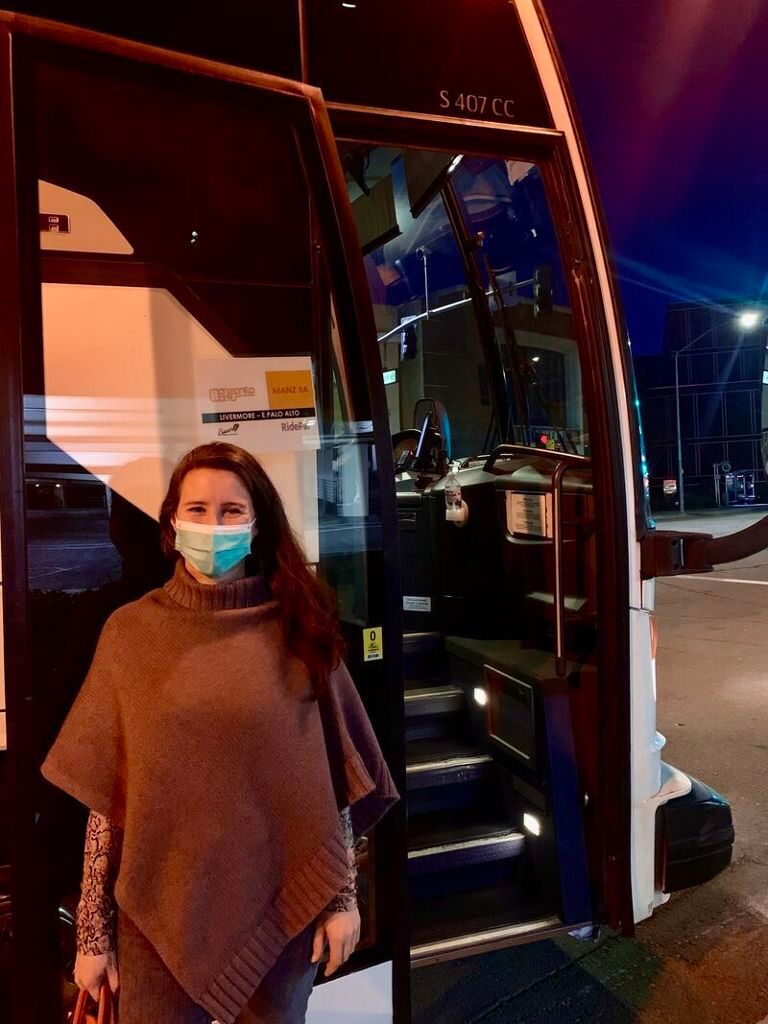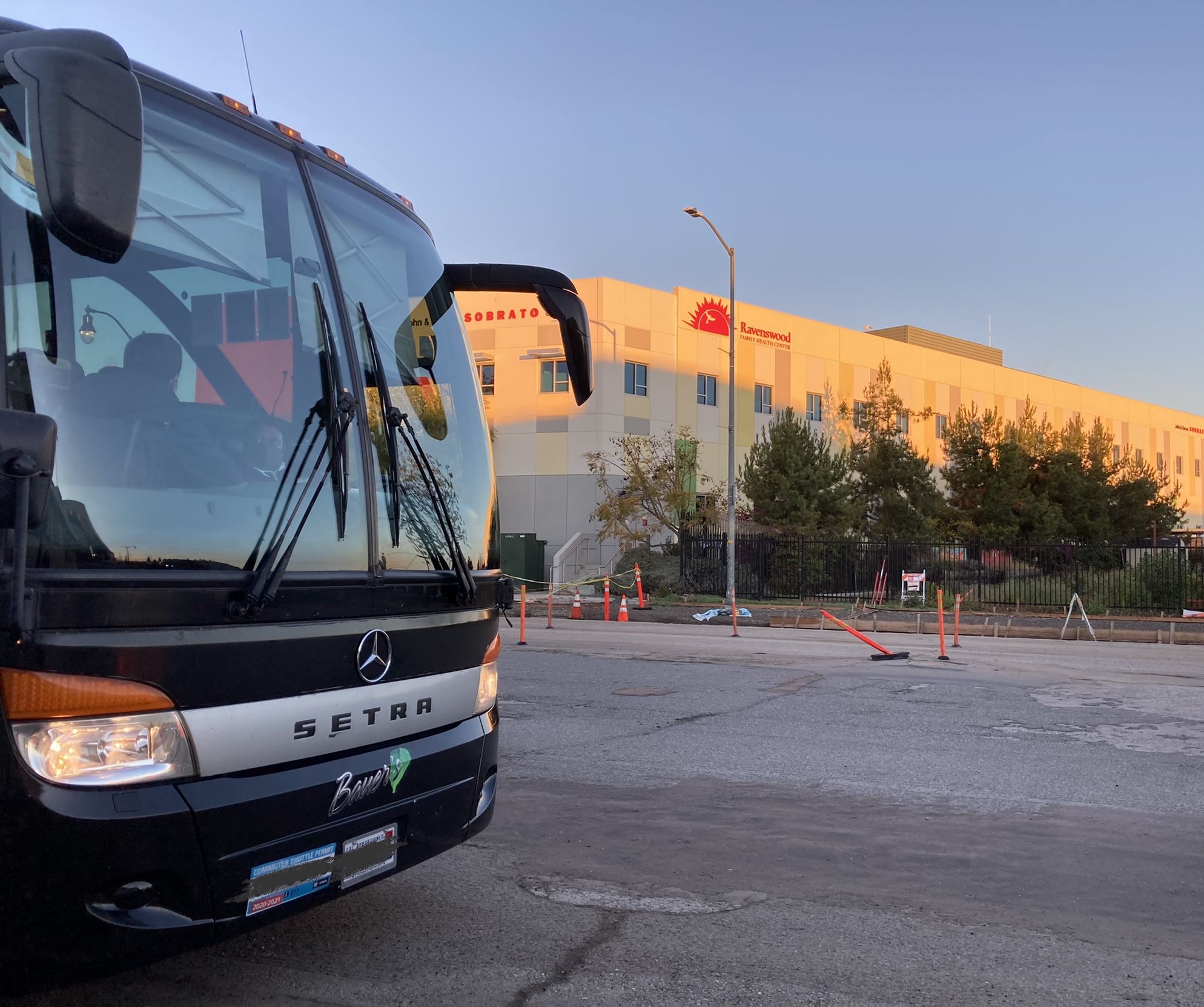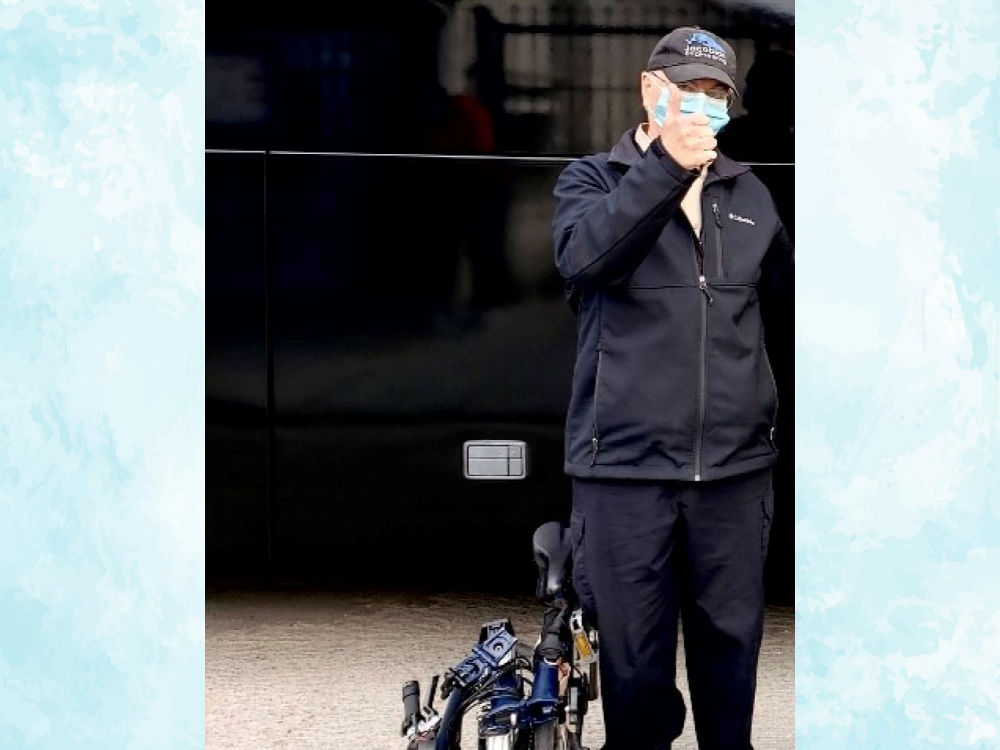
ABOUT SCOTT FRANKLAND
Scott Frankland is Head of Content at Sengerio. His spirit of inquiry leads him to the world of transportation and mobility to connect with the industry’s leading experts and shine a light on the hot topics.

The San Francisco Bay Area has a thriving local economy that continues to expand thanks to its vivacious technology culture. In the past decade alone, the Bay Area has generated nearly 900,000 new jobs and this rate is expected to increase in the coming years.
But even with this economic success, a lack of housing options has pushed a large portion of its labor force to the outskirts of the expensive business core.
This has led workers to commit to long-distance commutes to get to their workplace and are often referred to as ‘mega-commuters’ because they have to travel more than 90 minutes each way to their jobs.
On top of that, the Bay Area has a complex public transit network with 27 agencies across its nine counties, making it challenging to coordinate services and fares between agencies.
Consequently, the system is fragmented and unreliable. For this reason, traveling in a personal vehicle is often the simplest option— even if it means sitting in traffic for the extra hour or two.
With the pace of economic growth in the Bay Area, the total number of drivers on the road each day is soaring; greenhouse gas emissions are rising and so too is traffic congestion. The increasing demand for the roadways is inevitably driving the region towards gridlock.

With a mission to support the welfare of workers and their families, Manzanita Works was approached by several regional employers to broker the creation of a Transportation Management Association (TMA) that could help solve local problems stemming from regional dilemmas.
The nonprofit agreed to form and manage such a consortium on the condition that its members embrace the guiding principles of social equity and strengthening public transportation in order to work towards a more sustainable regional transit network.
This multi-stakeholder collaboration is one of a series of subregional TMAs that focus on local issues by tapping into an economy of scale so that employers who are unable to provide extensive transportation perks for their employees can still participate. By coming together, it is possible to cooperate across the region in a way that could complement regional infrastructure objectives without creating political polarization.
Prior to the pandemic, the nonprofit received letters of intent from global tech companies, regional developers, and even local nonprofits, resulting in the formation of the first subregional TMA of the series – the Ravenswood Transit Consortium – in May 2020.
With the likes of Google, the Ravenswood Family Health Network, and more recently, the U.S. Geological Survey at the same table, Manzanita Works’ model has switched from conceptual to applied with public, private, and nonprofit employers of all kinds.
To learn more about this innovative model, Sengerio had the pleasure of talking with the CEO of Manzanita Works, Mila Zelkha. Mila highlighted that
It’s amazing to think we have such diverse employers at the same table working together to solve local problems – regardless of their ability to pay – shaping services together through collective purchasing power to improve the lives of the common good.
During the Covid-19 pandemic, essential workers have been at the front lines of local communities working to ensure its members stay healthy, safe, and functioning.
From listening to the voices of medical, education, childcare, and food service workers, Manzanita Works learned that relief from the commute was desired even at a time when fewer cars were on the road.

The nonprofit collaborated with service provider Bauer’s Intelligent Transportation and RidePal software platform to launch Manzanita Works’ vision of a pilot program offering free long-distance transportation to and from the workplace for essential workers coming to work in person. This first phase of the pilot was known as the ‘Essential Workers Commute Shuttle Pilot’ which ran for 6 weeks in February and March 2021.
In a statement, Wendy Lau, the Civil Rights Manager at San Mateo County Transit District, told Sengerio that

When we look at transportation equity, we want to ensure access to economic opportunity regardless of income, gender, race, ethnicity, and disability. As the San Mateo Transit District continues to work towards this, Manzanita Works is able to increase this accessibility to economic opportunity through its shuttle programs for employees.
Another gap we have is last-mile connections to bus stops or train stations. While Manzanita Works may be part of this solution, it’s also able to further center the needs of employees who depend on reliable, convenient, and affordable transportation. By filling these gaps, we create a better and safer transportation network for our community to access economic opportunity.
Due to the subregional nature of the consortium, Manzanita Works was able to leverage languishing shuttle contracts during the state’s shelter-in-place order where employers could anonymously provide access to their infamous luxury shuttle buses.

Initially, the routes were designed around the shift needs of workers at three local healthcare centers. At the time, due to the start of the region’s mass vaccination events and the tremendous effort these healthcare centers continue to provide, the employers of these centers didn’t have the bandwidth to provide the original data of their staff to map the routes.
To create more efficient routes that benefited a greater demographic of essential workers, Manzanita Works used StreetLight Data software to analyze commute patterns related to the healthcare sites at various points in the shelter-in-place to make recommendations on where to route the buses. The nonprofit held a meeting with East Palo Alto residents to anticipate any impacts that would need to be mitigated and worked closely with Bauer’s Intelligent Transportation to adjust the routes and times throughout the initial phase of the pilot.
The shuttle program’s fleet pick-ups essential workers from 8 different cities in the Bay Area and makes its way to East Palo Alto where workers can make their way to the workplace or transfer with continuing services to Sunnyvale, Mountain View, and Palo Alto’s transit center.
The response was positive and the news quickly spread, especially among educators preparing for the return to in-person teaching. Nonprofit social services workers also started to access the pilot.

With the vaccination program well underway and California on track to reopen by mid-June, Manzanita Works’ essential worker transit pilot program is now in its second phase under the name Essential Express.
The Essential Express pilot continues to subsidize and prioritize essential workers in the region while enabling employers of all sectors to sponsor seats for their returning workers as society begins transitioning back to the workplace.

Working collaboratively with transportation service providers and software platforms, employers from all sectors can secure seats for their returning workers regardless of whether employees are returning full time or on a hybrid schedule.
In doing so, seats are subsidized and stops are prioritized for a range of frontline workers whose employers normally wouldn’t have the resources to provide such perks. Mila noted that
So many of us have been stuck in grueling Bay Area traffic wondering ‘what if?’ and ‘why can’t we?’. It turns out that if there’s a willingness to make space for someone else’s lived experience, there can be a discovery of creative ways to solve problems previously considered intractable. The courage of people willing to try has us deploying a novel approach that can take the edge off that brutal commute.
In addition to its transport solutions for essential workers, Manzanita Works provides commute pilotage to promote existing transportation programs and resources available to workers and a variety of partnerships to develop other transit solutions.
These programs aim to fill in the existing gaps in the transportation network such as providing “first and last-mile” solutions for workers transitioning from public transit services to the workplace. More recently, the nonprofit has partnered with Bikes Make Life Better to promote the use of bike commuting.
During a call with Hon. Rod Sinks, Former Mayor of the City of Cupertino and Former Chair of Board Directors of Bay Area Air Quality Management District, Rod explained how the Bay Area’s fragmented public transit system was negatively affecting ridership and farebox collections even before the pandemic.
To overcome the area’s transit issues, Manzanita Works provides a possible solution. Rod told Sengerio that

The solutions to the Bay Area’s transit problems require the private and public sectors to come together to find solutions that work for everybody. Manzanita Works has demonstrated an effective model to do so.
The independent governance of the 27 unique transit agencies in the Bay Area has created individual silos and been a real barrier to our goal of a seamless transit experience across the region. As major employers added new campuses in the Bay Area over the last decade, cities mandated that employers reduce employees’ car trips. With an ineffective public transportation system, those employers responded by building their own private bus networks. So we’ve created a truly fragmented set of independent transit services and yet more governance silos. Neither the public nor the private sectors have been able to do it on their own.
How can we design a better transit system? Manzanita Works is playing a critical role in convening a forum for public and private sectors to work together constructively. For example, understanding the needs of critical workers during the pandemic and offering them a commute alternative using contracted but underutilized private bus services of major employers is a major accomplishment. I am hopeful that Manzanita Works will continue to find creative solutions.
The Bay Area’s public transit system provides the general backbone to the area’s transport network. For instance, on the San Francisco Peninsula, the Caltrain corridor is the rail system that acts as the main spine for intercity transport in that geographical area.
While many workers use this for their commutes, the first and last-mile solutions aren’t there to accommodate their journeys. In some circumstances, employers do provide their own solutions for their employees. For many, however, this isn’t feasible or possible.
Fundamentally, Manzanita Works’ program seeks to address the hard reality of living in the Bay Area: where people live is as varied as the locations where people work and there isn’t an integrated public system that connects all these dots in an efficient and equitable way.
Cognizant that some of the Essential Express shuttle routes may overlap portions of familiar public transportation services, the nonprofit aims to collaborate with the region’s public transit agencies to transition any ridership of the program to the public transit pipelines in its commitment to strengthening public transportation in the long run.
If successful, a more seamless and equitable transit system would emerge to serve a greater demographic of workers and make their daily commute less burdensome. On top of this, it is an innovative way to attract the future generation of workers to the Bay Area and provides an alternative solution to the area’s heavy traffic problem.

ABOUT SCOTT FRANKLAND
Scott Frankland is Head of Content at Sengerio. His spirit of inquiry leads him to the world of transportation and mobility to connect with the industry’s leading experts and shine a light on the hot topics.